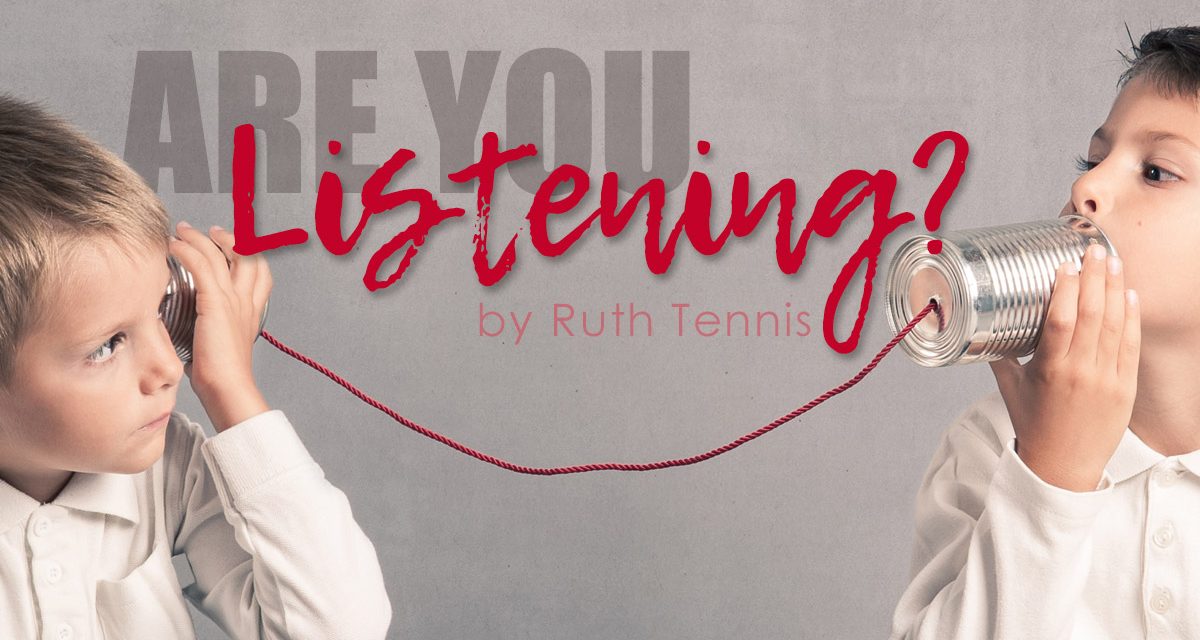A lot of talking happens in our home schools. Have you noticed that? A large portion of our interactions and our teaching is spent speaking and listening. Unfortunately, we can often assume that because our students are hearing us that they are understanding us. There are so many things to focus on in our homeschool day that we forget to be intentional in training our children’s listening skills.
What’s a Good Listener Do?
My Chinese-speaking students used a specific phrase when their discussion was getting intense or they wanted to underscore their point. Its gist is a good reminder: “I speak so you understand.” Of course, I want my listener to understand something or I wouldn’t be talking. But often I place the burden of understanding solely on the listener. It’s their problem if they aren’t getting what I’m putting down! But am I communicating so that they understand? Did I really say what I meant? Did my nonverbals contradict or reinforce my words? Did I look for understanding and ask if they needed clarification? That’s what communication is all about: messages that lead to understanding.
Model Active Listening Skills
I am a repeat offender of poor listening skills. Honestly, I am a repeat offender of just-not-paying-good-attention. Communication is a two-way street: sending a message (encoding) and receiving a message (decoding). We can help our kids in these skills first off by modeling good listening.
Here are things active listeners do:
- Make eye contact-There may be cultural or individual differences, but looking at someone, particularly in the eyes, still shows interest in the speaker and conveys respect.
- Reinforce with nonverbals-Relax your posture, nod your head when you “got it,” keep your hands and feet still, etc.
- Correct with grace-If at all possible, correct grammar, vocabulary choice, or illogical arguments by lovingly coming alongside your child and explaining.
- Limit interruptions-These may come from each other or from those outside the conversation.
- Aim for understanding-Ask questions, restate what you hear, explain what you don’t understand and ask for help to understand.
- Start (and end) conversations politely.
- Incorporate your own family rules in your conversations-Consistently maintain in your daily conversations what you’ve established—and be ready to ask forgiveness when you make mistakes.
Engage in the Conversation
How do we get children to feel more comfortable and skilled in oral communication? Many would rather hide in a hole than call someone on the phone. Anecdotally, it seems like verbal skills are becoming more challenging. Find opportunities to practice oral skills as part of your normal family life—and have fun with it. Some options to try:
Any Age (including parents!)
Practice good communication in your conversations: speaking and listening. Conversation starters help practice oral and listening skills, including thinking on your feet and asking follow-up questions. Pick a card or use ideas from placemats around the dinner table. Or, when a child has studied something really cool, let them talk about it at the dinner table with everyone asking questions.
For younger students, workbooks and activities are available to practice these skills. Even reading completed Mad Libs® offers a comfortable way to practice being put “on the spot.”
Use modern conveniences! Have children select something they’ve written or list questions they’ve always wanted to ask a relative. Then, they can phone or video chat to engage in conversations.
Try a version of charades. Write different emotions on slips of paper and put in a bowl. Then, one a new slip of paper, write a sentence from a book (have your kids do that). Collect several and put these in a second bowl. Then, take turns pulling out one emotion and one sentence. Think of all the fun they’ll have seeing if siblings can guess that they’re demonstrating angst or disappointment or joy.
Older students can practice taking notes using lectures or sermons, video, just audio alone (most challenging), typing or handwriting. Have these kids select the evening topic of questions, coming prepared to engage the younger ones.
Being able to use our communication skills is something that is challenging, pushing us outside our comfort zone, but oh, so worth it! ~ Ruth





